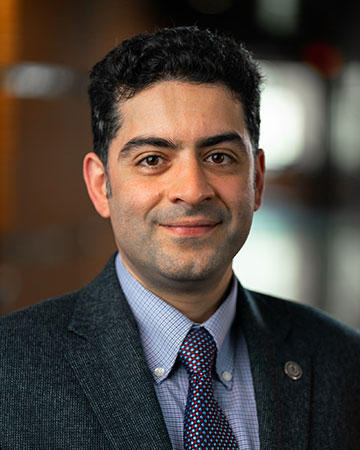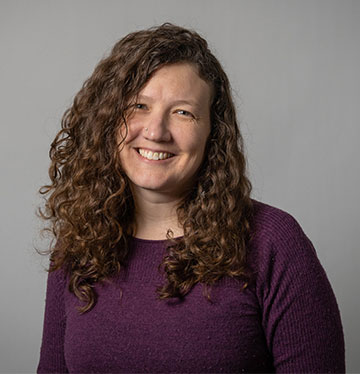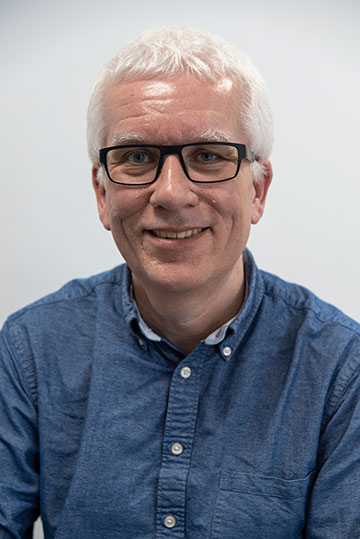
Arash E. Zaghi.
Arash E. Zaghi, a professor of civil and environmental engineering at the University of Connecticut, USA, had seen therapist after therapist for his depression and anxiety. In one such encounter, the therapist asked Zaghi if he had ever been diagnosed with attention-deficit/hyperactivity disorder (ADHD). When Zaghi said no, his therapist urged him to take a diagnostic test.
The result stunned Zaghi: “I think I scored the highest possible,” he says. Confirming the diagnosis, his therapist said, “The anxiety that you’re experiencing is the product of your ADHD in an environment that is not necessarily built with people like you in consideration.”
ADHD is a form of neurodivergence, a term that encompasses a range of neurological conditions, including autism spectrum disorder, dyslexia and other learning differences that are often labeled as disabilities. As Zaghi’s therapist pointed out, typical work environments—including STEM educational environments and workplaces—are not designed with neurodivergent people in mind. As a result, a growing movement of people who identify as neurodivergent are advocating for cultural change.
“Like other types of diversity, cognitive diversity adds to our creativity and our potential to solve problems in unique ways,” says Connie M. Syharat, a doctoral student at the University of Connecticut who researches neurodiversity in engineering. “The more inclusive we are … the more brainpower we bring in to solve complex problems. And that’s really important.”
Shared challenges

Connie M. Syharat.
In June 2023, Syharat, Zaghi and a group of coauthors published a research paper entitled, “Experiences of neurodivergent students in graduate STEM programs,” in Frontiers in Psychology. For their study, the authors conducted 10 focus group sessions with STEM graduate students who self-identify as neurodivergent. The authors found three overarching themes emerging from the students’ experiences.
One was the students’ internalization of neurotypical norms. Neurodivergent students see their neurotypical peers as the “ideal” students, which can lead to negative self-judgment—telling oneself, for example, “I don’t do things the way I’m expected to, so there’s something wrong with me,” Syharat says. They often have challenges in areas in which they feel they are expected to excel, so they may struggle to feel that they belong.
This feeds into the two other themes, one of which is the propensity to mask and overwork. Feeling pressure to appear neurotypical, neurodivergent students often try to overcompensate in work and in social settings. For example, students with ADHD often exhibit perfectionist tendencies, spending a lot of time on their work so that they don’t appear to be “less than” their peers.
One study participant said, “I will work until everything is done and everything is beautiful and wonderful … And if I have to not sleep for three days to do that, that's what happens.” For students with autism, this inclination could manifest as putting in extra effort to make eye contact when speaking with another person, even if it makes them uncomfortable. This pressure to take on more and hide parts of themselves can lead to burnout and have negative impacts on mental health.
The final theme was students self-silencing to maintain stability in their relationship with their advisor. Because of what the students perceived as a threatening power dynamic, they would put the advisor’s needs or priorities ahead of their own, avoid setting boundaries and overcommit on projects to please their advisor, even at the cost of their own happiness.
“I know many people just in my program who hide [their neurodivergence], because people who do mention it to faculty members are treated much differently,” one study participant noted. “And so, it’s kind of easier to just deal with it on your own and not tell anyone, and maybe struggle behind the scenes.”
Finding strength in difference
But despite these struggles, many study participants reported that they also see their neurodivergence as a strength—they value the unique perspectives, creativity and problem-solving ability that they bring to their STEM field. And Bill Davies, a professor of acoustics and perception at the University of Salford, UK, sees his autism this way as well.

Bill Davies.
Davies was diagnosed with autism at age 52. When he and his wife took their daughter to a child psychologist because she was having difficulties at school, the psychologist suggested that Davies himself might be on the autism spectrum. He vehemently disagreed at the time, but after a few years, he got curious enough to take an online diagnostic test. When the test returned a very high score, he realized that he might indeed be on the spectrum and sought a formal diagnosis.
Davies was initially hesitant to tell his employer about his autism, as there is still a social stigma around neurodivergence. Eventually, though, he started telling people at work. And although there have been situations where he felt his needs weren’t being met—like when his school decided to put all the physical sciences and engineering professors on an open-plan floor, exposing him to unwanted auditory and visual stimuli—Davies thinks that, overall, his autism has served his academic career well.
For example, a commonly reported feature in autistic persons is an intense interest in a particular subject. Davies realized that his work has been well served by this trait, as he can maintain deep concentration on his research area and can easily get into a “flow state” of focus. Davies also went on to serve as the head of his department and the associate dean of his school, despite saying he is “hopeless at networking.”
In those roles, his inability to read people’s body language and facial expressions to discern hidden intentions worked as a disadvantage. But at the same time, it allowed him to focus on what he felt was important, such as improving the department, while staying out of the political side of the managerial position.
A collaborative view
Zaghi likewise embraces this “strength-first” approach to neurodiversity. But he rejects the notion of thinking about neurodivergent traits as individual assets. Humans are supposed to collaborate, and people with different cognitive skills should come together to take advantage of their collective strengths without “othering” those who are supposedly different, he argues.
These days, Zaghi hosts Square Pegs, a podcast about neurodiversity in academia. “Who says a round peg is better than the square peg?” Zaghi asks. “We think square pegs are misfits. [But] no, they're not. They’re misfits when all the holes are round.” The purpose of the podcast is to share the experiences of neurodiverse academics with the broader academic community, and tell neurodivergent listeners that “it’s not only you,” Zaghi says. “There are systematic issues that are causing these challenges.”
He also discourages people from pathologizing cognitive variations. “They are assuming that there is such a thing as a normal, ‘right’ brain,” he says, “and I’m still waiting for someone to tell me what that normal brain is.” People are not machines—when thinking about cars, it makes sense to expect every Ford Focus to be the same, as they are manufactured in a factory. “But for people,” Zaghi says, “we are expected to be different.”
Syharat encourages neurodiverse students to “find a community where you can be yourself.”
INCLUDE program
Syharat encourages neurodiverse students to “find a community where you can be yourself.” She works to create this kind of space with the University of Connecticut’s INCLUDE program (neurodiversity.engr.uconn.edu), a US National Science Foundation–funded effort for which she serves as project manager
The goal of INCLUDE, Syharat says, is to help academic departments move beyond an accommodation mentality to a strength-and-innovation mentality. The program thus works with incoming engineering students to give them a strength-based perspective from the get-go, according to Syharat.
INCLUDE accomplishes these goals through a learning and support community for engineering students that meets weekly. There’s also a year-long development course for faculty members to help them redesign their classes to be more inclusive and incorporate “universal design for learning” principles (see “Toward a Truly Inclusive Classroom,” OPN, February 2022). The program also works, to a more limited extent, with engineering firms looking to incorporate neurodiversity into their diversity, equity and inclusion initiatives.
“So, from a discipline that’s quite traditional and largely has the lecture/exam format, we’re moving toward projects that allow students to incorporate their individual strengths and interests,” Syharat says. “And it helps with motivation, it helps with engagement and it helps people stay feeling like they belong in engineering.”
